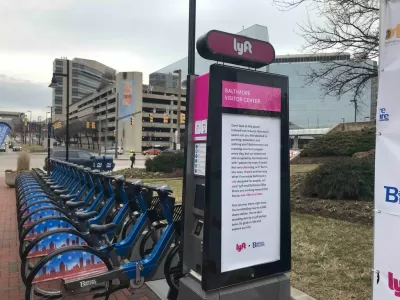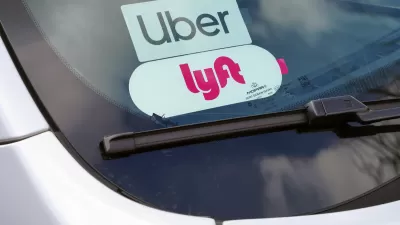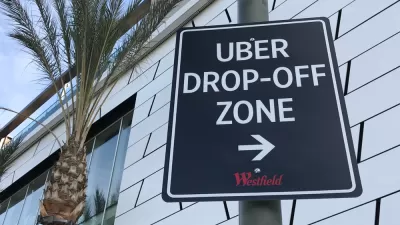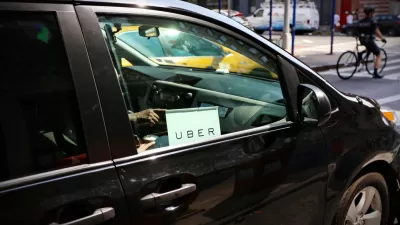After years of resisting efforts by cities to regulate their business and constant—but unprofitable—growth, Uber and Lyft are homing in on their unique strengths.

Despite small differences in their operations and business models, Uber and Lyft have essentially operated as interchangeable services for most customers for years. Now, writes Andrew J. Hawkins, the two transportation network companies (TNCs) are starting to differentiate themselves by centering their operations on each company's specific strengths, as evidenced by earnings reports issued last week by both TNCs.
"Uber’s main side hustle is delivery. Food and other delivery bookings in the fourth quarter grew 33 percent year over year." Meanwhile, Lyft president John Zimmer says his company has no plans to follow suit. "We want to have one main consumer that we’re building for. And again, we will not build a consumer-facing marketplace for groceries or food," Zimmer said. But Lyft has bolstered the micromobility side of its business, reports Hawkins, with bikeshare as its fastest-growing customer base, while Uber has "largely abandoned its two-wheeled operations."
Hawkins notes that, while both companies expressed enthusiasm about autonomous vehicles, both largely sold off their AV divisions, with Lyft still maintaining some ties through a deal with Argo.ai to put its vehicles on Lyft's platform.
The two rideshare giants continue to compete and face some of the same challenges, but, as Hawkins puts it, their recent earnings reports show that the two may take more different paths in the future.
FULL STORY: Uber and Lyft are finally starting to look like different companies

Study: Maui’s Plan to Convert Vacation Rentals to Long-Term Housing Could Cause Nearly $1 Billion Economic Loss
The plan would reduce visitor accommodation by 25,% resulting in 1,900 jobs lost.

North Texas Transit Leaders Tout Benefits of TOD for Growing Region
At a summit focused on transit-oriented development, policymakers discussed how North Texas’ expanded light rail system can serve as a tool for economic growth.

Why Should We Subsidize Public Transportation?
Many public transit agencies face financial stress due to rising costs, declining fare revenue, and declining subsidies. Transit advocates must provide a strong business case for increasing public transit funding.

How to Make US Trains Faster
Changes to boarding platforms and a switch to electric trains could improve U.S. passenger rail service without the added cost of high-speed rail.

Columbia’s Revitalized ‘Loop’ Is a Hub for Local Entrepreneurs
A focus on small businesses is helping a commercial corridor in Columbia, Missouri thrive.

Invasive Insect Threatens Minnesota’s Ash Forests
The Emerald Ash Borer is a rapidly spreading invasive pest threatening Minnesota’s ash trees, and homeowners are encouraged to plant diverse replacement species, avoid moving ash firewood, and monitor for signs of infestation.
Urban Design for Planners 1: Software Tools
This six-course series explores essential urban design concepts using open source software and equips planners with the tools they need to participate fully in the urban design process.
Planning for Universal Design
Learn the tools for implementing Universal Design in planning regulations.
City of Santa Clarita
Ascent Environmental
Institute for Housing and Urban Development Studies (IHS)
City of Grandview
Harvard GSD Executive Education
Toledo-Lucas County Plan Commissions
Salt Lake City
NYU Wagner Graduate School of Public Service





























